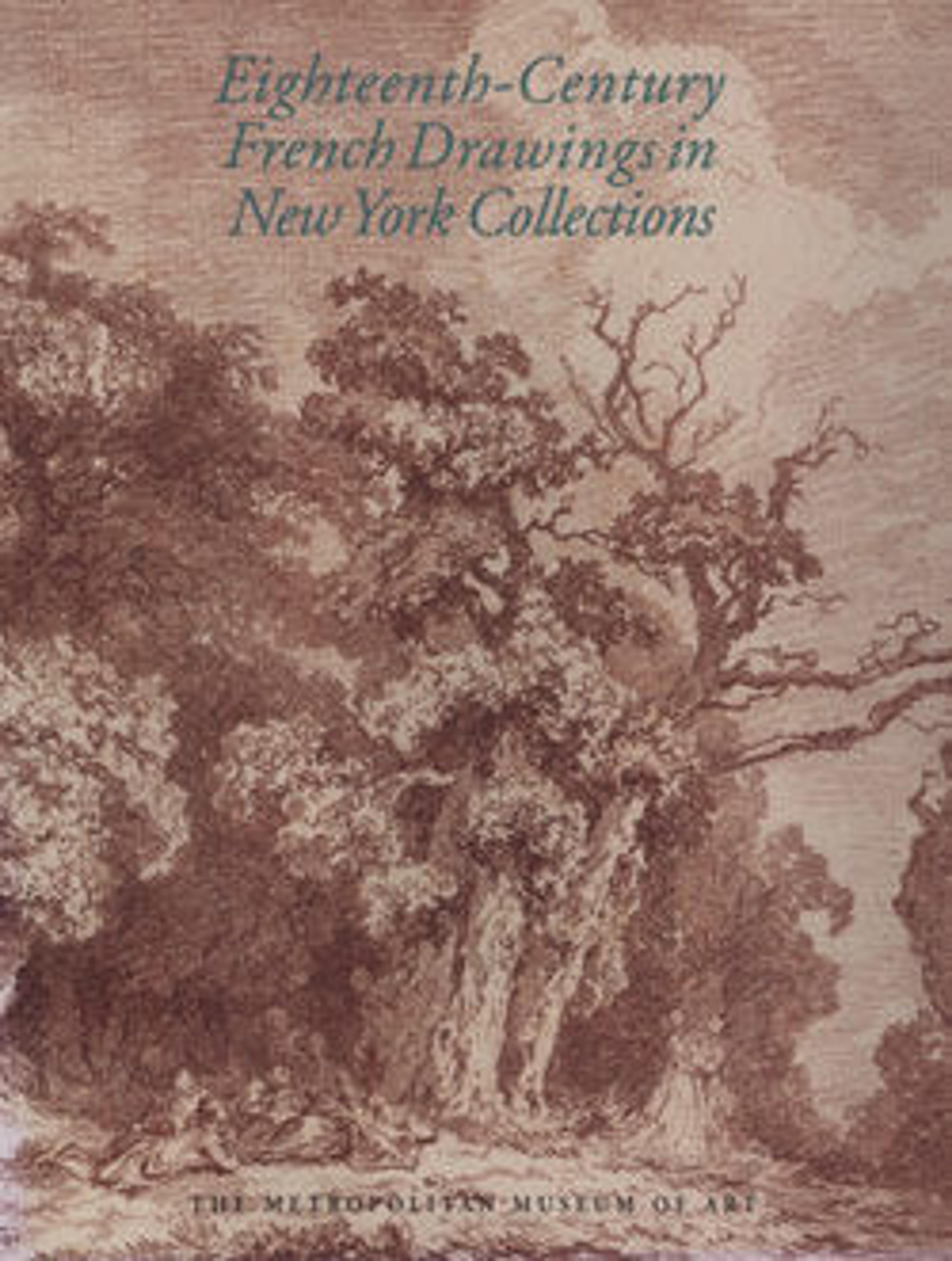The Stalled Procession
Claude Gillot was a central figure in the unfolding of the rococo aesthetic, an influence most apparent in the work of his famous student Antoine Watteau (1684-1721). He was immersed in the world of theatre, especially the light-hearted humor of the commedia dell’arte, and it is through this lens that he engaged with established pictorial traditions.
Many of his most ambitious drawings relate to one of his series of prints depicting the life of satyrs. This painterly sheet, built up in layers of red chalk wash and white gouache, must be an unexecuted design related to such a project. Infra-red photography conducted by the Department of Paper Conservation has revealed a second composition, also of a bacchanal subject, in pen and ink beneath the visible surface layer.
Like other Gillot bacchanales, The Stalled Procession adapts the age-old iconography of the pagan deities of the woodlands to idiosyncratic, even satirical ends. A chariot bearing a seated female faun has become stuck in the mud. Four muscular satyrs, in an apparently futile attempt, strain to free the wheels. Unable to proceed, the requisite band of revelers huddles behind the chariot, to the amusement of onlookers. The humorous predicament of Gillot’s faun driver rings more of a comic stage routine than of an antique source.
Adapted from Perrin Stein and Mary Tavener Holmes, Eighteenth-Century French Drawings in New York Collections, 1999, cat. 1, entry by P. Stein.
Many of his most ambitious drawings relate to one of his series of prints depicting the life of satyrs. This painterly sheet, built up in layers of red chalk wash and white gouache, must be an unexecuted design related to such a project. Infra-red photography conducted by the Department of Paper Conservation has revealed a second composition, also of a bacchanal subject, in pen and ink beneath the visible surface layer.
Like other Gillot bacchanales, The Stalled Procession adapts the age-old iconography of the pagan deities of the woodlands to idiosyncratic, even satirical ends. A chariot bearing a seated female faun has become stuck in the mud. Four muscular satyrs, in an apparently futile attempt, strain to free the wheels. Unable to proceed, the requisite band of revelers huddles behind the chariot, to the amusement of onlookers. The humorous predicament of Gillot’s faun driver rings more of a comic stage routine than of an antique source.
Adapted from Perrin Stein and Mary Tavener Holmes, Eighteenth-Century French Drawings in New York Collections, 1999, cat. 1, entry by P. Stein.
Artwork Details
- Title:The Stalled Procession
- Artist:Claude Gillot (French, Langres 1673–1722 Paris)
- Medium:Point of brush with gouache and red wash, over pen and black ink
- Dimensions:8 5/8 x 13 1/4 in. (21.9 x 33.7 cm)
- Classification:Drawings
- Credit Line:Purchase, David T. Schiff and The Charles Engelhard Foundation Gifts, 1998
- Object Number:1998.207
- Curatorial Department: Drawings and Prints
More Artwork
Research Resources
The Met provides unparalleled resources for research and welcomes an international community of students and scholars. The Met's Open Access API is where creators and researchers can connect to the The Met collection. Open Access data and public domain images are available for unrestricted commercial and noncommercial use without permission or fee.
To request images under copyright and other restrictions, please use this Image Request form.
Feedback
We continue to research and examine historical and cultural context for objects in The Met collection. If you have comments or questions about this object record, please contact us using the form below. The Museum looks forward to receiving your comments.
